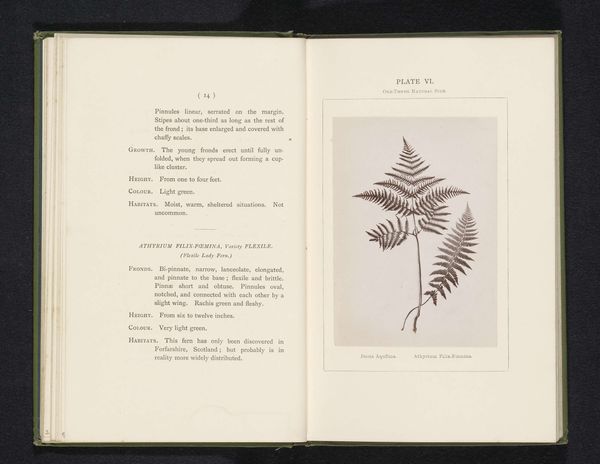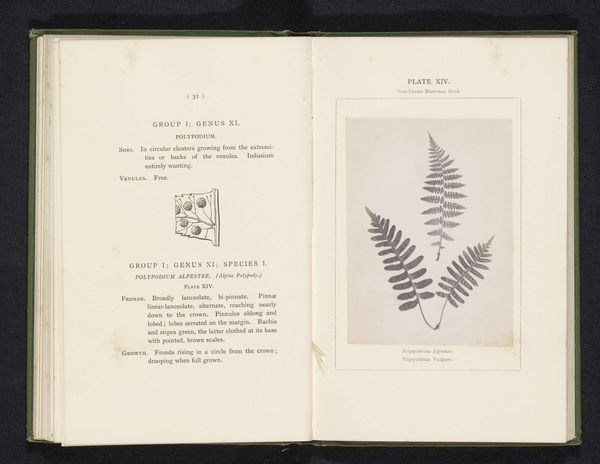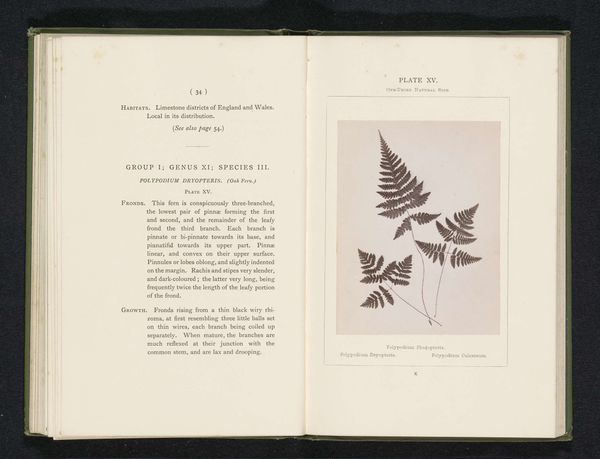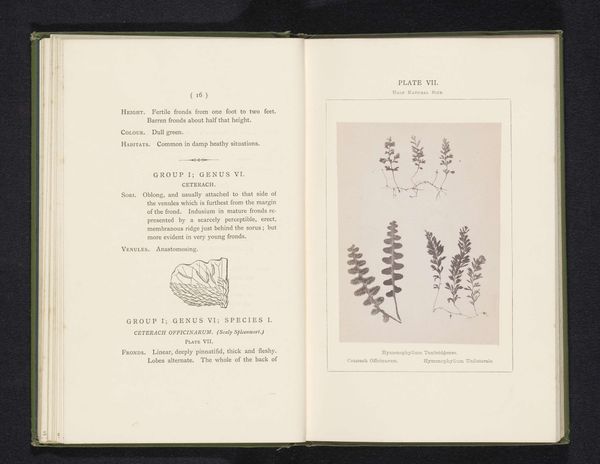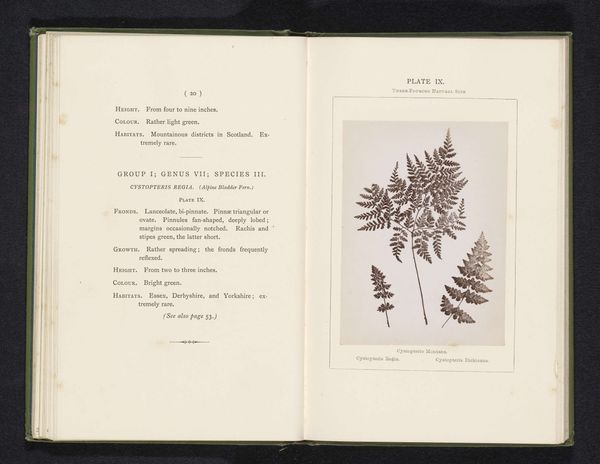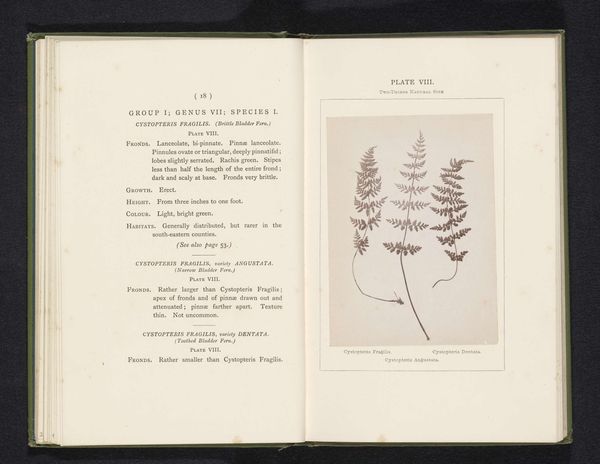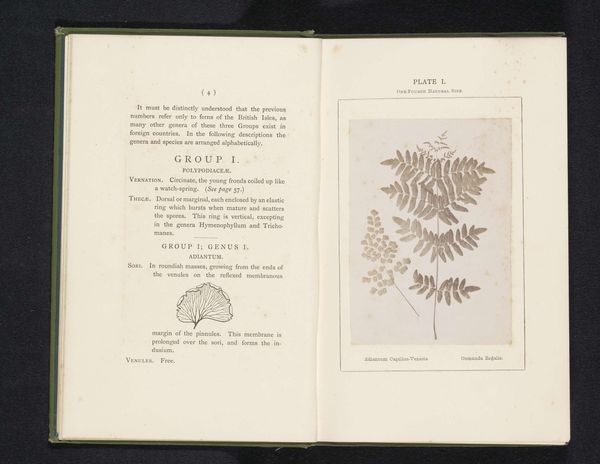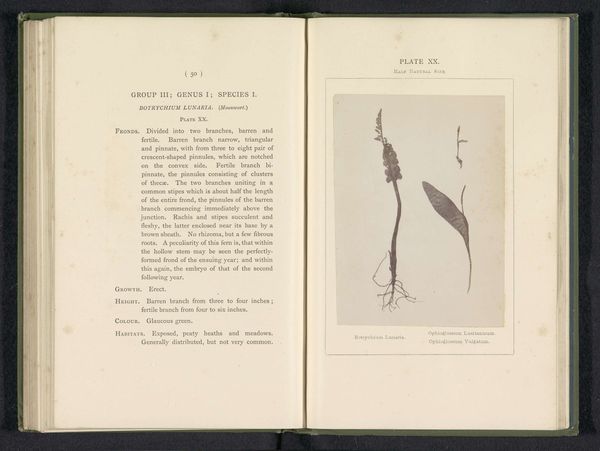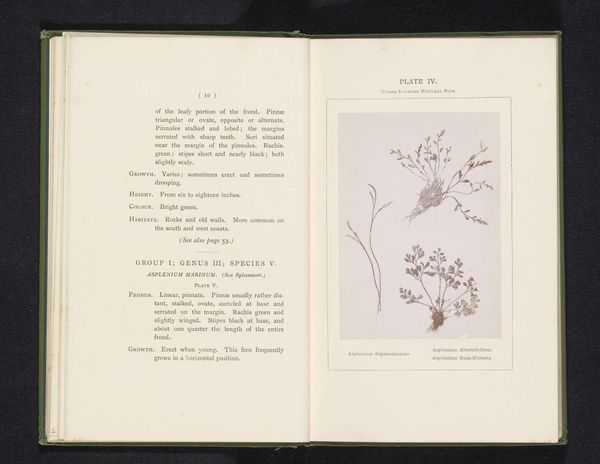
print, photography
#
type repetition
#
aged paper
#
homemade paper
#
pale palette
# print
#
white palette
#
personal journal design
#
photography
#
personal sketchbook
#
journal
#
realism
#
historical font
#
columned text
Dimensions: height 117 mm, width 86 mm
Copyright: Rijks Museum: Open Domain
Curator: Here we have an intriguing piece, “Bladeren van twee soorten niervarens,” or “Leaves of Two Kinds of Kidney Ferns,” created before 1877 by Sydney Courtauld. It's a photographic print mounted in what appears to be a scientific journal or perhaps a personal sketchbook. Editor: My first impression is one of stillness. The pale palette, combined with the careful arrangement of the fern specimens, evokes a quiet, contemplative mood. It’s like a preserved moment, a capturing of delicate beauty against the turning wheel of time. Curator: The scientific nature of it makes me wonder how botanical illustration and photography shaped Victorian ideas about natural history, knowledge production, and colonial encounters with plant life. Photography here acts as a scientific tool to objectify and dissect plants. Editor: Indeed. Ferns, in particular, held significant symbolic weight. During that era, they symbolized solitude, sincerity, and fascination with nature's intricate design. Think of the fern craze and pteridomania that swept through Victorian society. I wonder if that fervor touched Courtauld's process. Curator: The placement of the ferns is interesting, particularly in the context of colonialism. On the left is dense text, in columns, categorized in scientific language. It feels as though this page, including its photography, intends to contain the exotic other—nature. The column structure here traps both ferns on either side. Editor: I find myself focusing on the column structure; it reminds me of old encyclopedias and record keeping in the early Victorian period. Perhaps Courtauld, too, sought to document a disappearing world. Photography, for many at this time, promised that as a medium. Curator: This photo is a potent symbol of its time. The scientific impulse intertwined with an almost devotional appreciation of nature; anxieties about a world rapidly changing; and of course the political climate where one corner of the world thought to control and possess all of nature. Editor: It offers a powerful glimpse into a bygone era when observation, collection, and documentation were infused with personal passion. Thank you for pointing out the way photography serves the goals of colonialism at this time, though. I'll hold that context closer moving forward.
Comments
No comments
Be the first to comment and join the conversation on the ultimate creative platform.

